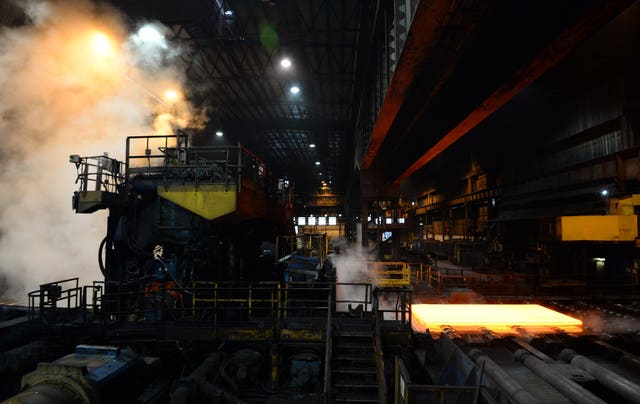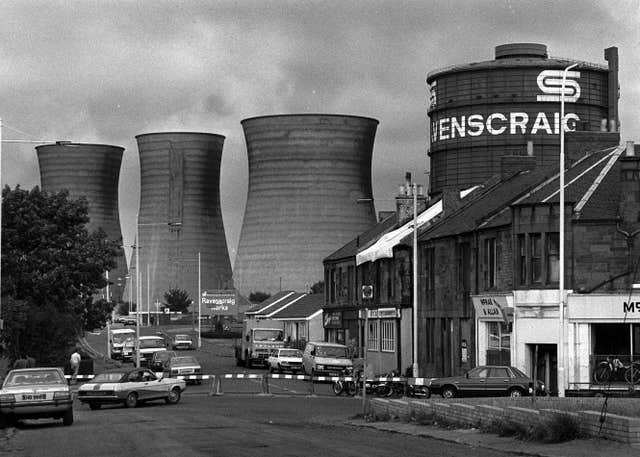Decades of decline endured by steel industry
Scunthorpe has been the home to steel manufacturing since the late 19th century.

The announcement that British Steel has gone into liquidation is the latest blow to an industry which once dominated manufacturing in the UK, and to a works in Scunthorpe with a 150-year history.
– Steel-making in Scunthorpe began in the late 19th century and by the early 20th century, had consolidated into three large companies spread over a series of massive sites to the east of the Lincolnshire town.
– The industry, including the Scunthorpe operations, was briefly nationalised by the post-war Labour government but this was reversed by Winston Churchill’s Tories in 1953.

– In 1967, 90% of the steel industry was nationalised by Harold Wilson’s Labour government and British Steel was created out of 14 separate companies. The newly nationalised operation had around 270,000 employees.
– The 1971 employment census showed 323,000 people were steel workers – 1.5% of all those employed. This had halved by 1981 to 167,000 (0.8%). The biggest drop was between 1978 and 1981, with numbers falling from 271,000 to 167,000.
– In 1973, the government came up with a 10-year development strategy which would bring in billions of pounds of investment, but it meant the industry would be concentrated in five main areas: South Wales, Sheffield, Scunthorpe, Teesside and Scotland.
– The Scunthorpe works was rocked by disaster in November 1975 when 11 people died following an explosion in the Queen Victoria blast furnace.

– Falling demand and productivity issues dogged the industry through the late 1970s. The government’s strategy of subsidising loss-making plants and prioritising employment levels came to an end with the election of Margaret Thatcher in 1979. The total nationalised workforce at this time was about 142,000.
– A 13-week national pay strike shut the industry down in 1980.
– The early 1980s saw dramatic cuts to production in Scunthorpe. But around 9,000 people were employed in the industry in the town in 1982.
– The Tory government privatised British Steel in 1988. The national workforce had shrunk to 52,000 by this time. By 1990, around 7,300 people were employed in the industry in Scunthorpe.
– In 1992, British Steel announced further cuts to the industry with the closure of the Ravenscraig plant in North Lanarkshire, dominating the headlines as it signalled the end of steel-making in Scotland.

– In 1999 British Steel and the Dutch steel-maker Koninklijke Hoogovens merged, creating the Corus Group. The new firm became the biggest steel-maker in Europe. But Corus soon faced severe problems and announced plans to cut the national workforce, which dropped to around 30,000.
– In 2007 Corus, including the Scunthorpe operation, was bought by the Indian firm Tata Steel in a £6.8 billion takeover.
– In 2014, around 34,500 people were employed in the steel industry.
– A further crisis in the industry in 2015 saw closures including the end of the Redcar works, which was bought from Tata by SSI in 2012. Further contraction took place at plants across the country as controversy swirled around energy costs and fears of cheap Chinese steel destabilising the world market.
– In 2016, Greybull Capital bought Tata’s Long Products Division for £1. It resurrected the name British Steel.
– On May 22, 2019, British Steel went into liquidation.





